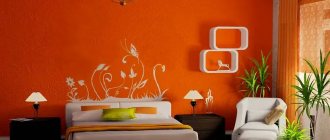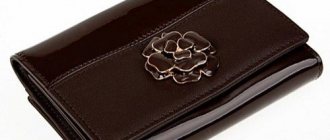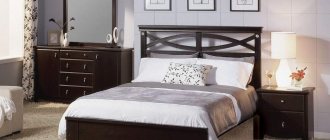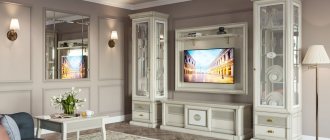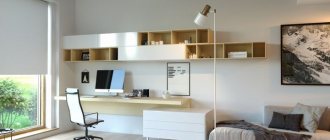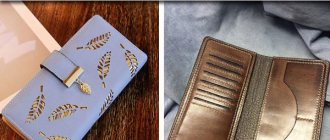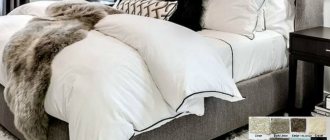It's no secret that colors can have a certain effect on a person, causing different emotions, affecting mood and even influencing areas of life. Feng Shui teaches the proper placement of colors in space, giving practical recommendations on how to use color to attract good luck, find harmony, improve relationships with the opposite sex, achieve success in your career and more. Let's look at the primary colors.
Red
The strongest color in Feng Shui, symbolizing activity, activity, power. A color related to the element of Fire. Affects the manifestation of leadership qualities, favorable for attracting money. Additionally, red signifies passion and love.
It is not recommended to use red in large quantities, since in excess it becomes dangerous - it provokes aggression, tires, and increases blood pressure.
Red can have a negative effect on people suffering from diseases of the cardiovascular system, mental illnesses, and those who have a tendency to be hot-tempered. Moderate use of interior items and decor in shades of red will help activate those areas of life for which he is responsible.
For example, various details in the office would be appropriate - they will activate efficiency and attract money. In this case, depending on the problems in the financial sector, there may be quite a lot of red. Also, according to Feng Shui, the wallet should be red. A red lamp or lantern in the bedroom will add fire and passion to your personal life.
Please note that many talismans and amulets in Feng Shui are tied with a red thread, since this color, among other things, protects space from negative energy.
Color by gua number
The gua number is determined by the year of birth - the last two digits are added until the result becomes a single digit.
In addition, the calculation is made based on gender and age:
- men subtract the resulting value from 10;
- women add 5;
- for children born after 2000, the resulting value is subtracted from 9;
- girls born in 2000 (and later) must add 6 points to it.
If the result is 5, then the number of gua for women will be 8, and for men - 2.
Blue
Belongs to the element of Water. Blue is primarily associated with the sky, sea, coolness, freshness, and peace. Blue is responsible for relaxation, calm, tranquility, and decreased activity. It should be used to attract harmony.
It will be favorable to use blue in the interior of a bathroom, living room, or corridor. The nursery can also be decorated with a predominance of shades of blue if the child is hyperactive.
But you need to use it with caution in the bedroom - it can cool the senses, in the kitchen - it can reduce appetite (which, on the contrary, can be beneficial for those who strive to be slim), in the office - it can reduce work activity and set the mood for relaxation.
Excess blue can cause apathy, decreased energy, and depression.
Yellow
Element of Earth. In Feng Shui, bright and rich yellow represents positivity, joy, warmth, comfort, hospitality, and well-being. It has a beneficial effect on overall well-being, health, and mood.
It is especially suitable for rooms deprived of sufficient sunlight, as it is the color of the Sun. Used in a child’s room, it will give a boost of energy and strength for studying, and will help in passing exams.
By choosing yellow to decorate your living room or kitchen, you can be sure of the positive energy charge of the room. For those who are not ready for bright accents of saturated color, calmer shades are quite suitable - mustard, light lemon and others.
All of them activate creativity, artistry, mental activity, stimulate the intellect and develop imagination. Yellow dishes, vases, decorative pillows, lamps, bedspreads - all these elements will bring joy and good mood into life. This is the color of happiness.
Green
Being the color of the Wood element, green carries the energy of life itself. This is the color of flourishing, new life, development and at the same time peace, harmony, tranquility and energy balance with the world. Green can relieve tension, nervous fatigue, and promote recovery.
Living plants in the house are the most powerful source of green color and its energy. You can “green” a space quite globally – the walls in pastel shades of green will not be tiresome.
This truly natural color has a beneficial effect on internal balance, development, and spiritual growth. It would be appropriate to have green in the bedroom - it is perfect for relaxation and relaxation.
In a children's room, unobtrusive shades of green will create an atmosphere for the student to concentrate and help reduce fatigue. In the kitchen, all kinds of shades of green can set the mood from calm to energetic, but in any case they will carry positive energy.
Each element has its own color
Each of the five elements has its own color scheme:
- The water is blue or black.
- The soil is brown and peachy.
- The tree is green.
- Fire purple.
- Metal: silver, gold, white.
The interaction of elements is extremely important to consider when choosing the color scheme of a room. You must begin by creating a Circle of Wu-shin, consisting of five elements. In it, each element is endowed with the power of the previous one: wood feeds water, fire feeds wood, the earth element is strengthened by fire, wood influences the earth, fire controls metal, earth controls water, wood is destroyed by metal.
When decorating an apartment or house, you must take into account the influence of elements on each other. This impact is based on three principles.
Principle of birth
From one element another is born:
- from the ashes that Fire leaves, Earth is born;
- Earth forms metal;
- thanks to Metal, Water appears;
- The tree feeds on water.
Principle of destruction
One of the elements suppresses the other, maintaining a natural balance:
- Metal has a detrimental effect on wood;
- The Earth is destroyed by the roots of the Tree;
- The Earth stops the flow of Water;
- Water extinguishes fire;
- Fire melts metal.
Weakening principle
The element that nourishes another, gives him strength and weakens him:
- The tree feeds on fire;
- Earth takes from Fire everything it needs;
- Metal is powered by the Earth;
- Water is born thanks to metal.
Violet
Violet appears as a result of mixing red and blue, so it has a large number of possibilities and spheres of influence.
This is the color of abundance, high position in society, status - it’s not for nothing that the clothes of the royal families had such a shade.
Mysterious and mysterious, purple attracts love and romance, which makes its presence in the bedroom not at all unnecessary. Purple pillows, photo frames, a bedspread - small details will add to your personal life.
All kinds of shades of lilac and lavender promote mental activity and develop wisdom. This is the color of good luck and an assistant in business - it helps increase wealth. Depending on the location in the apartment, details of lilac and violet colors can activate certain areas of life. In a child's room, purple elements will help children's imagination and creativity.
Purple color according to Feng Shui is a high spirituality, sensuality, intuition, it enhances energy, so it is not recommended to use it in the bathroom and kitchen, where the energy is often not very favorable.
Orange
If you mix red and yellow, you get orange. He absorbed the strength and energy of red and the kindness of yellow. This is the color of creativity, mental activity, creativity, cheerfulness, and communication.
Orange increases appetite, so it can be both beneficial and harmful for the kitchen, depending on your aspirations and dietary preferences.
In a children's room, moderate use of orange will have a beneficial effect on the learning process and the development of the child's creative thinking. But in a room intended for sleep and rest, it is better to avoid orange - in excess, like red, it can overtire and irritate.
For work that requires a creative approach, orange will come in handy.
Rules for working with color in Feng Shui
There are a few simple rules to remember:
- One color should not dominate others.
- Shades for finishing should be selected based on your goals and the purpose of the room.
- The chosen shade can be more or less bright, matte or saturated - here everything will largely depend on your feelings.
- Lighting also plays an important role. This factor must be taken into account.
- A ceiling painted in dark colors will visually appear lower.
- Light shades visually enlarge the room.
- You cannot use more than five colors to decorate your home.
- Interior doors look best if they are light.
- Before you start decorating a child's room, you need to check how the child reacts to the chosen color.
- Small rooms should not be decorated with dark-colored curtains or carpets.
White
Symbolizes the element of Metal. Versatile, neutral color. The color of purity, spirituality, lightness, innocence, freshness, beneficence.
Can be used in any room, but in combination with other colors, since excess white can cause melancholy, apathy, and loss of vital energy. Exclusively white walls are associated with a hospital ward.
In rooms that are not spoiled by sunlight, large amounts of “whiteness” should also be avoided. But in the kitchen, white will help increase appetite, highlighting foods and dishes favorably.
Black
A color related to the element of Water. A color that does not tolerate competition, confident, independent - it is perfect for offices and study rooms.
Like white, we do not recommend it for use in its “pure” form. It carries the energy of money and career success, but it is better to combine it with other colors. The ideal classic combination with white will balance the energy. In Feng Shui, black color is a so-called “energy vampire” - it can depress, tire, and cause sadness.
The presence of black in children's rooms, living rooms, and bedrooms is highly discouraged. In combination with metal, various shiny, mirror details, it is more applicable to rooms where business communication takes place and business agreements are concluded.
Combinations to avoid
Cannot be combined:
- red with blue (Water and Fire elements conflict);
- white-green (wood is hostile to metal);
- blue with brown (water is opposite to earth);
- blue and yellow (Earth and Water do not get along);
- pink with blue (fire is hostile to water).
Color combinations
Brown
Brown color in Feng Shui belongs to the element Wood.
This is a warm and cozy color that evokes associations with coffee and chocolate. Brown would be appropriate in the hallway or kitchen; in combination with other more dynamic colors, it is well suited for the bedroom and living room.
Since it is quite calm, its excess can cause laziness and apathy. Therefore, it is better to avoid brown in the work area and children's room.
Since the union of wood and water is favorable, then in Feng Shui the combination of brown with bluish hues is successful. Brown will be favorable in the interior of people living in a very busy rhythm - it will contribute to emotional relief. Brown is suitable for the front door.
Feng Shui pays great attention to creating the color scheme of a room. When choosing a color for your rooms, consider the following emotional, but proven by thousands of years of historical experience, characteristics below.
White color in feng shui.
White is a synthesis of all colors, the ideal color, the color of dreams.
In Feng Shui, this color belongs to the Metal element, the cardinal direction is West. Therefore, feng shui beginners are not recommended to paint walls facing west only white. The point is that if you don't have enough knowledge in applying Feng Shui techniques, you run the risk of stimulating the energy of Western rooms too much. The ideal feng shui combination would be a combination of white with yellow tones, and the brighter the latter, the better.
Its impact on our lives is reflected in divine self-realization, humility and creative imagination. This is the color of purification. White color leads us to a higher spiritual mood and divine love. Symbolizing purity, it can be a great healing color as it contains energy and the power of transformation.
White can be successfully used in any room of the house. However, if you have a completely white room with a completely white interior, then it will not be cozy or attractive. Always add colored decorations and paintings, or complement white with apricot, gold or blue shades.
Black color in feng shui.
Black is the opposite of white. It symbolizes a difficult perception of life. Black color absorbs other colors. It also symbolizes efficiency, seriousness, and closeness. Black color focuses attention on the experiences of the inner world.
In Feng Shui, black belongs to the element Water and represents impending power. Black color is focused on the inner world, while white is focused on the outer world. Black is the end and the beginning. In the darkness new life is born. The day ends and begins with darkness. Using black as the main color in a room can be depressing or even overwhelming. A black room interior, however, can add drama and dynamism to a room and can highlight and give it special meaning.
Gray color in feng shui.
The gray color in the interior of a room evokes sad thoughts. You will not get relaxation in a room with gray walls.
Gray is a passive color, joyless and boring. It does not have strong radiation, i.e. it has a weak effect on people. It restricts and slows down both emotional and mental activity. In private houses or apartments, gray is used only to highlight and draw attention to bright color accents.
Golden color in feng shui.
Golden can hardly be called a color. However, in color therapy, this color is successfully used to treat physical and mental ailments. Golden smoothes out stress. It helps with spiritualistic sessions and meditation, strengthens self-confidence and charges with positive energy. In practice, gold color should never be used in large quantities.
In Feng Shui, this color belongs to the Metal element. It strengthens a person's physical and mental strength and also increases his wealth.
Green color in feng shui.
Green is the color of nature, of life itself. Green color has a calming and harmonizing effect on the entire body and promotes internal harmony. It leads to internal stability and calms the nervous system. If you suffer from frequent mood swings or want to concentrate better at work, introduce more green color into your interior.
Green color in Feng Shui belongs to the Wood element, the cardinal direction is East. Walls facing east should not be painted entirely green. Otherwise, you risk overstimulating the energies of the eastern room. According to Feng Shui, green is a symbol of peace, harmonious relationships and numerous offspring (including in a figurative sense).
Green is absolutely suitable for the bathroom. The green color you use in the bathroom should be either bright green, like spring, or even and clean, like tree foliage, but not khaki or dirty green.
Blue color in feng shui.
Blue is the color of the sky, symbolizing spiritual sublimity and purity. Blue color belongs to the element Water. It harmonizes the flow of energy in the body, calms tense nerves and erases aggressive thoughts, and helps to focus on internal experiences.
Blue color is ideal for use in rooms where residents are passive. However, you should not make plain blue walls. It is better to use shades of blue as color spots on wallpaper of a different color.
According to Feng Shui, blue color belongs to the sky and Water, the cardinal direction is north. Therefore, walls facing north should not contain blue.
A bedroom in blue tones will be very good at calming a hyperactive child. Blue is also a great color for a meditation room or bedroom, or any other room where you would like to feel a sense of peace.
Yellow color in feng shui.
Yellow color symbolizes calmness, ease in relationships, and intelligence. In general, yellow is the color of the sun, good mood and positive, cheerful people. This color symbolizes joy, spiritual harmony and cheerful thoughts.
Yellow color stimulates creativity and even helps with physical ailments. It is especially useful for those recovering. Yellow color stimulates the functioning of the endocrine glands. Yellow is a Yang color. Yellow objects will activate the energy of creative people.
According to Feng Shui, the color yellow belongs to the element Earth, the best place to place yellow objects is in the center.
Yellow color is great for a home office. It is desirable wherever you want to experience thought-boosting and stimulate conversation. Yellow kitchens are more likely to be social gathering spots for family and friends and usually evoke a sense of affluence. Yellow will also be good in a room where the whole family usually gathers to discuss pressing issues. It encourages people to open up and at the same time promotes spiritual uplift and optimism. A smooth, bright yellow color is suitable for a nursery, as it gives positive emotions and at the same time normalizes mental activity.
Red color in feng shui.
Red is the color of passion. Red activates blood circulation, hematopoiesis and heart function, increases blood pressure, warms and enhances energy flows. But use this color sparingly in the interior, because... red evokes aggression.
An abundance of red in the bedroom leads to nervousness and insomnia. The Red Table will whet your appetite, but if you're on a diet, it may not be the best option. The color red in a study or study room or even a living room encourages movement and activity.
Feng Shui considers red to be a very powerful color. It belongs to the element Fire, its cardinal direction is south. The color red in Feng Shui also symbolizes joy and happiness. In China, red has always been considered the color of good luck. That's why there are so many red and gold colors in the interior of Chinese restaurants.
Orange color in feng shui.
Orange is the color of happiness and communication. This is brightness and kindness, tolerance and sociability. Orange is suitable for any room where you will organize meetings of friends or fun holidays; This color is especially good for a party atmosphere.
Orange is a very strong color because it is a mixture of red and yellow. It activates vital energy, stimulates the start of new things, drives away sadness, melancholy and depression. Orange is not suitable for the dining room and kitchen; it stimulates appetite and leads to excess weight. In addition, orange visually reduces the size of the room.
Pink color in feng shui.
Pink is the color of spring and all living things.
Pink is the color of little girls. According to Feng Shui, it emphasizes their future femininity and programs dedication in love and the ability to evoke positive feelings in others.
Pink color drives away aggressive moods. If you paint the walls of a small room pink, it will appear larger. Pink color is also good for work spaces where there are a lot of different people.
Purple color in feng shui.
Purple is a serious, festive and mysterious color. This color strengthens harmony and eliminates disharmony in all areas of human life. The color violet can enhance the ability to concentrate, it calms the nerves and relieves insomnia. Like blue, violet color calms, pacifies, and comforts. Very often, purple is associated with inner insight and intuition.
Purple is a very powerful color; too much of it in your home is not recommended. A splash of purple is good for decorating a white, green or even yellow room. Purple can be mixed with white to achieve a soft shade of lavender and lilac - great for a room where you practice spirituality.
Brown color in feng shui.
Brown and all its shades are preferred by those who stand confidently on their feet. People who have a soft spot for him value traditions and family.
However, in a house with brown walls there is not enough air; it has a depressing effect on the psyche. It is ideal to choose light brown colors for furniture. Dark brown evokes negative thoughts and blocks positive ones.
Brown color belongs to the element Earth. It evokes a feeling of security and inner peace, relieves fears, stress and anxiety, under one condition - choose light shades!
When choosing a particular color for your room, remember that color is very individual and carries personal characteristics. A lighter or darker shade of a particular color can significantly change your perception of that color.
Harmony and prosperity with Feng Shui! Natalya Titova, Feng Shui and Chinese astrology consultant.
Video on the topic
About the rules for choosing colors for the interior according to Feng Shui in the video:
These are just basic color characteristics. A deeper study of Feng Shui will provide information about the nuances of combining colors with each other and their use in different sectors of the home.
This knowledge will help organize the space, taking into account not only the cardinal directions, but also the characters of the residents, the goals and aspirations of each. And the most important thing in choosing is to listen to your intuition and focus on a feeling of inner harmony.
The influence of color on a person
Colors influence human life. One brings wealth, fame and success, while the other seems to require full mental strength.
The influence of color on a person
You must learn to understand the meaning of each of them. By applying this knowledge in practice, you will be able to shape your own destiny.
